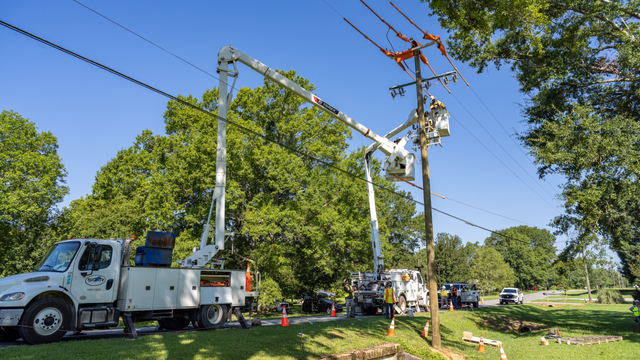By Mitesh Patel, Dave Leligdon and Yatin Premchand
From C-suites and state capitals to international governments and the United Nations, leaders of the world’s most influential economies are codifying the role of renewables in an increasingly sustainable power generation mix. On the government side, leaders in China, Europe and elsewhere are on a growing list of American states in setting ambitious renewable portfolio standards (RPS) targets.
Simply put, renewables are powering up. From the tiny town of Panguitch, Utah, to the metropolitan Tainan City, Taiwan, new projects are bringing solar and wind power to remote regions, delivering innovation to help electric utilities, large corporations and governments reduce their carbon footprint and demonstrate the potential for renewable energy sources to achieve parity with conventional power generation sources. As their prices drop and capabilities mature, solar, wind power and other distributed energy technologies are taking an increasingly prominent position in the energy mix and driving efforts to fulfill the U.N.’s Sustainable Development Goals.
The Renewables Global Status Report — the Renewable Energy Policy Network ‘s annual look at the market — recently revealed that, globally, renewable energy is outgaining fossil fuel and nuclear capacity combined and now represents one-third of the world’s installed capacity. Renewables’ rising profile has been forecast for years, but Black & Veatch’s 2019 Strategic Directions: Electric Report contains stark new data points reflecting the steady encroachment of solar, wind and distributed generation on traditional power generation. The numbers also reveal how these new technologies are influencing long-term planning.
Driven by renewables’ rising cost parity on the grid, as well as new advances in the reliable integration of those sources onto the grid, 44 percent of respondents to our survey of electric industry leaders in North America indicated that renewables and distributed generation are motivating utilities to retire central generation sites, with another 31 percent saying they expect that to happen in the near term.
Our survey also finds that many utilities are actively engaging regulators and customers in the evolution of renewables.

Global markets are seeing significant investments and renewable capacity trends are pointed up for the long-term. Projects span the spectrum: from smaller solar-plus-storage developments, such as the Panguitch, Utah, project that will bring clean energy to a remote population, and a new 150-watt wind facility in Illinois, to more than 1-gigawatt (GW) utilityscale solar farms in the Gulf Cooperation Council (GCC).

In Asia, major markets include Taiwan, Philippines, Vietnam, Indonesia and Thailand, with combined solar capacity additions expected to triple in the next five years as wind capacity additions are expected to grow five-fold during the same period. Three of these — Taiwan, Philippines and Vietnam — could become the fastest growing markets for renewable energy in the Asian region. The Association of Southeast Asian Nations (ASEAN) committed to a 23-percent target for sustainable, modern renewables by 2025. In India, the government has a goal of 175 GW of capacity from renewables by 2022.
An example of renewables innovation can be found in floating solar — known as “floatovoltaics” — in which photovoltaic (PV) panels are mounted on the surface of water bodies. With solar energy generation requiring large areas for PV panels to lay, floating solar systems present a solution that can address land acquisition issues effectively, which is particularly important in population-dense regions. Floatovoltaics on a hydro-electric dam reservoir offers easy access to power evacuation to the grid and a hydro-floating solar hybrid solution for improved grid performance.
Thailand has plans to install large-scale floating solar farms at the Sirindhorn hydropower plant in Ubon Ratchathani province and expects to float 16 solar farms with a combined capacity of more than 2.7 GW in nine of its hydroelectric dam reservoirs by 2037. Singapore will install a 50-megawatt (MW) floating solar PV system by 2021, while Hong Kong successfully installed its first pilot floating solar system at Shek Pik Reservoir for supplying electricity to the reservoir’s nearby pumping station and is developing a 28-MW floating solar PV system for tendering. In Tainan City, Google is developing a solar farm of 40,000 solar panels elevated several feet above the surface of local fish ponds — providing up to 10 MW of power to support a nearby data center.
The opportunity for clients, including power producers, is in implementing technologically advanced, cost-competitive and bankable engineering, procurement and construction (EPC) solutions. Deploying time and motion studies and drones, for example, has the potential to cut project schedule and cost. Microgrids are offering utilities and large consumers of power the opportunity to proactively work together to help integrate intermittent renewable energy with conventional power generation sources.
This approach will lead to the delivery of a stable and widely accessible power supply that can accelerate energy transformation and universal electrification. Off-grid solutions, featuring hybrid solar and energy storage-based minigrids and microgrids, also are providing power to island communities and remote areas where expanding the existing grid has traditionally been economically unviable or as cost-competitive alternatives to traditional diesel power generation.
Renewables also can offer a competitive edge for industrial sectors with a high energy demand and the need for a stable, uninterrupted power supply, such as data centers and mining. The industry also is highly focused on improving the bankability of renewable energy projects through hybrid power systems that incorporate multiple sources of renewable energy with battery storage — and smart distribution technology — to address intermittency from renewables. Doing so will require collaboration with energy suppliers and regulators to resolve the technical complexities of integrating renewable energy generation and battery storage with existing generation and transmission assets.
That integration is a key challenge in many developing markets, where electricity providers are pushing ahead with aggressive renewables deployments on grids that are many decades old. Across more developed.
markets, particularly in Europe and the United States, grid augmentation is smoothing the path toward higher renewables penetration, particularly as the falling cost of energy storage opens new options for bringing distributed energy resources onto the grid. Yet, reluctance persists in pockets of the United States, centered on cost, risk and the complexities of integration.

Baseload-Ready?
Clean energy-driven public policy goals across the world, combined with falling costs for renewables and energy storage, present displacement scenarios for traditional generation sources and assets. But are renewables ready to claim a baseload-generating stake in global power generation?
Some market shifts suggest natural gas will remain the primary baseload driver for the foreseeable future. In China, for instance, where air quality concerns are driving power generation away from fossil sources, the government is pursuing wider adoption of renewables, although its near-term road map relies significantly on LNG imports to create distance from coal.
Consider these additional factors:
-
Natural gas demand in emerging markets: The International Energy Agency forecast in its Southeast Asia Energy Outlook 2017 that demand for natural gas will grow by 60 percent by 2040 because of to rising consumption in power generation and industry. One estimate holds that by 2035, more than half of the region's gas demand will be met by LNG. Demand growth for natural gas from India and China, despite each country’s renewable energy targets, reflects an “all of the above” approach to meeting energy demand.
LNG infrastructure is heating up: With abundant supply from major sources such as the United States and the Middle East and rising import appetites, LNG production and shipping technologies, particularly floating liquefied natural gas (FLNG), are maturing and more quickly moving supply to demand-heavy markets.
Expensive transition: Momentum for renewables remains tempered by the scalability challenges when higher and higher penetration is targeted. Energy storage has yet to fully overcome seasonality and intermittency issues, and despite falling costs, financial investments required for large-scale deployment aren’t trivial. More broadly, uncertainties persist about how quickly renewables can serve as a baseload power generation source. Despite California’s accelerated renewables roadmap — the state hopes to achieve a 100 percent RPS by 2045 — the pace of the switchover to renewables is uncertain.
Falling Costs, Rising Adoption
There is a sustained trend of declining renewables and storage costs. According to Bloomberg New Energy Finance, global solar capacity is expected to reach 740 GW by 2022, with nearly half of installed capacity and a third of electric generation coming from wind and solar sources by 2040. Energy storage, the key to fully harnessing intermittent power generation, is predicted to become a $20-billion annual market.
Regardless of geography, a key area of focus will be improving the bankability of renewable energy projects through hybrid power systems that incorporate multiple sources of clean energy with battery storage — and smart distribution technology — to stabilize fluctuating output from renewable energy sources
Mitesh Patel leads the renewable energy business for the Asia, Middle East and Africa region, helping Black & Veatch’s clients with end-to-end solutions for large and small renewable and distributed energy projects. With 25 years of experience across the lifecycle of power projects, Patel’s career spans from structuring and executing complex deals and project development strategies to serving on owner’s engineer and operations and maintenance teams of large independent power producers.
Dave Leligdon is a senior vice president and global renewable energy business line leader for Black & Veatch's power business. Leligdon has led the renewables business since September 2018 and has more than 30 years of experience with energy, water and wastewater facilities in multiple regions, including the largest active power project in the southern hemisphere.
Yatin Premchand is managing director for Black & Veatch’s management consulting business in the Asia-Pacific region, based in Singapore. Premchand is a recognized leader in renewable energy and corporate sustainability efforts with over 20 years of experience in the clean technology and environmental sectors. After starting his own consulting firm in 2008, Premchand joined the Sustainable Energy Association of Singapore (SEAS) in 2010 to spearhead the development of deal brokerage, market entry and growth acceleration. He has been leading teams in the Asia-Pacific region in the delivery of sustainable and viable energy projects. At Black & Veatch, Premchand specializes in ways to improve reliability for power utilities, scale-up renewables, and provide policy advise with a focus on increased profitability and productivity. He also provides support on evolving energy markets and regulation in the region.





